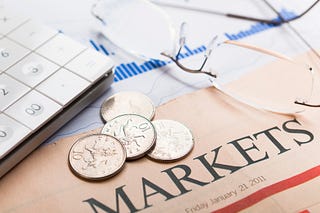
Mar-A-Lago Accord: What's the Deal?
A grand bargain to weaken the USD and boost American manufacturing?
There has been plenty of buzz recently about a "Mar-A-Lago Accord." Market strategists, analysts, and the media have all contributed their views.
As of now, there is no official accord or deal; however, if one is struck, it could be very consequential and, hence, worth monitoring and preparing for.
"Mar-A-Lago" is the name of Donald Trump's 126-room resort in Palm Beach, Florida, which has been his primary residence since 2019. Meanwhile, the "Mara-A-Lago Accord" refers to a possible grand bargain which may be struck between President Trump and the United State's key trading partners aiming to rebalance the global trading system - much like the Plaza Accord of 1985, where the U.S. and its trading partners agreed to weaken the U.S. dollar.
Much of the current discussion of a potential accord can be traced to a November 2024 essay by Stephen Miran titled "A User's Guide to Restructuring the Global Trading System."
The essay is particularly significant given that Miran was earlier this month appointed chair of The Council of Economic Advisers, an agency within the Executive Office of the President.
A key focus of the essay was tackling the large and persistent trade deficits in the United States and bringing back manufacturing jobs to the country — key topics of President Trump's economic agenda.
The below two charts show the declining trade balance and loss of manufacturing jobs in the United States.
According to Miran, a large part of the trade deficit stems from an overvalued U.S. dollar.
Because the U.S. dollar is the world's reserve currency, central banks and global investors hoard it, creating artificial demand and inflating its value. This, in turn, makes it cheaper for companies to manufacture overseas and import goods to the U.S., hollowing out the U.S. manufacturing base.
In fact, central banks buying U.S. dollars is a form of currency intervention aimed at preventing home currencies from appreciating.
To rebalance the global trading system, Miran suggests using trade tariffs as leverage to get trading partners to agree to the "Mar-A-Lago Accord."
Under the accord, the U.S. and its trade partners would engineer a weakening of the U.S. dollar, which would revive the competitiveness of the U.S. manufacturing system.
Miran, also discusses having trading partners term out their U.S. bond holdings to keep USD interest rates low.
Central banks swapping their holdings of short-dated U.S. government debt into non-tradable zero-coupon century bonds could reduce the need for the U.S. government to issue regular bonds and save interest costs, thereby putting downward pressure on yields.
What does it all mean?
Firstly, it is essential to note that there is no deal or official proposal yet. However, the essay could give some insight into government officials' thought processes.
President Trump's tariff ramp-up has led some participants to believe the administration will focus on the U.S. dollar next.
But this is where things get murkier—the U.S. doesn't seem ready to give up its reserve currency status just yet, and neither does the world have ready alternatives for now.
Having central banks swap their U.S. Treasury bond holdings into longer-dated bonds also has serious complications. For one, a forced exchange could be seen as a form of default by the U.S. government. Even a voluntary exchange could cause credibility concerns in the market.
For these reasons, the ability to pull off such a grand bargain may not be straightforward or likely in the near term. However, should the U.S. administration think this way, there may be other interim efforts to weaken the U.S. dollar from here.
Even without outright forex interventions, market participants themselves may start pricing in additional risk premiums in the U.S. dollar and trimming allocations. This could do some of the currency adjustment work on behalf of authorities.
With this in mind, investors must carefully assess their currency exposures.
Bond market reactions may be more muted, given even greater uncertainty about any form of bond swap. Fed policy, inflation readings, and recession risks are likely to remain key drivers instead.
Lastly, the perceived desire for a weaker dollar together with policy uncertainties will likely keep the demand for gold strong. As seen below, gold, which recently surpassed US$3,000/oz, continues to outperform equity and bond markets.
Disclaimer:
All content, information and opinions provided on Fincoaster are for informational and educational purposes only. Nothing contained herein is investment advice or recommendations. No guarantee is provided about the accuracy or completeness of the information provided. Readers should consult their financial advisers to ascertain the suitability of any investment.
Contributors to Fincoaster may, from time to time, have positions in any investments discussed.
Fincoaster is operated and managed by Envision Ventures Limited.












